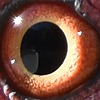HOME | DD
 TheBootesArtVoid — Bluebill Says Hello, Bluebill Says Goodbye (E)
TheBootesArtVoid — Bluebill Says Hello, Bluebill Says Goodbye (E)

#animal #animalphotography #animals #australia #australian #australiananimals #australianwildlife #bird #birds #duck #ducks #natural #nature #naturephotography #photo #photography #photographyanimals #photographynature #photos #wildlife #wildlifephotography #birdphotography #thebootesartvoid
Published: 2022-12-03 23:43:21 +0000 UTC; Views: 2914; Favourites: 92; Downloads: 0
Redirect to original
Description
Species Name: Blue-billed Duck
Species Latin Name: Oxyura australis
Native To: Australia
Conservation Status: Near Threatened
Photo Taken At: Melbourne Zoo
Size (length): 35-45cm (14 – 18 inches)
Weight: 800-850g (28 - 30oz)
Lifespan: 16 years
Population Size: 12,000
Description:
These birds are sexually dimorphic, the male will have a chestnut brown coat of feathers on most his body and black feathers on his head and near his tail. His eyes will be a light brown, the males of this species will have the distinctive bright blue bill these birds are known for.
The females on the other hand will have a more plain appearance to them. Their entire bodies will be covered with a pattern of light and dark brown feathers. The females will have a grey-ish brown bill instead of the distinctive blue bills the males have.
Diet:
These ducks are omnivores, they will mostly get their food whilst wading on top of the water of ponds and lakes. They will eat a variety of different insects such as fly larvae, caddis flies, dragonflies, flies, and water beetle larvae. These birds can often been seen diving into the water in order to catch some of their food. These birds will also eat a variety of plants such as seeds, buds, stems, leaves and the fruit of a variety of different plants.
Behaviour:
Not much is known about how these ducks communicate as they seldom make any noise or calls. They only utter low sounding rapid quacks, not much else is seen other than this call when a male is pursuing a female during mating season. Before mating can take place series of physical displays are made by the male before a long chase ensues before the female agrees to mate with the male. It seems that even during the mating season these birds are quite secretive/shy as they will often times dive under the water in order to flee from danger rather than fly away.
Breeding seasons can vary but typically occur during the months of August to November. Breeding will take place in freshwater swamps with dense vegetation that are rarely visited or disturbed. The nests themselves will be made over the water typically by using dead Typha leaves in dense beds of vegetation of the Typha or Bullrush plants. These birds are polygamous in nature and will generally only pair up during mating season.
The female will generally lay approximately six eggs but the number can vary from as low as 3 eggs to 13. Larger clutch sizes usually mean that more than one female has laid eggs in the same nest. The female will incubate the eggs for about 27 days, the young will only stay in the nest for a day or so before the mother will lead the young away from the nest to migrate. The chicks quickly become independent at a young age and will become fully grown adults within a years time. Outside of mating season these birds can be found in freshwater lakes and rivers.
Conservation:
Currently these birds are listed as threatened in the state of Victoria and listed as vulnerable in the state of New South Whales. Various programs have been set up to monitor and manage the following factors: regulation of existing wetlands through drainage, flood mitigation, water harvesting; and vegetation loss due to clearing, overgrazing, and salinity. Furthermore there have been efforts to create artificial and permanent wetlands to try to encourage an increase of this birds population.
Further Reading (general information):
Wikipedia: Blue-billed duck - Wikipedia
Birdlife: Blue-billed Duck | BirdLife Australia
Kidadl: 19 Amaze-wing Facts About The Blue-Billed Duck For Kids (kidadl.com)
Australian Museum: Blue-billed Duck - The Australian Museum
World Life Expectancy: BLUE-BILLED DUCK LIFE EXPECTANCY (worldlifeexpectancy.com)
Swifft: Blue-billed Duck (swifft.net.au)
Further Reading (Conservtion):
Environment NSW: Blue-billed Duck - profile | NSW Environment, Energy and Science
Saving Our Species: Blue-billed Duck (Oxyura australis) | Conservation project | NSW Environment, Energy and Science
Environment VIC: Microsoft Word - 174 Blue-billed Duck 2003.doc (environment.vic.gov.au)
Related content
Comments: 11

👍: 1 ⏩: 1

👍: 0 ⏩: 1

👍: 1 ⏩: 0

👍: 1 ⏩: 1

👍: 0 ⏩: 0

👍: 1 ⏩: 1

👍: 0 ⏩: 1

👍: 1 ⏩: 0

👍: 1 ⏩: 1

👍: 1 ⏩: 1

👍: 1 ⏩: 0


























